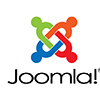CMS stands for
Content Managment System
A Web CMS or Web Content Management System is a is a software system (web application) that enables those who know very little about coding and programming the ability to author, contribute, collaborate, create, or manage a web site/application with ease. Though their are an array to choose from, most of them function the say in how they each display content based off of predefined templates. These templates are defined by the developers and can be modified if the user has experience with code.
There are several different systems on the market which cater to different content. Some are more for blogging, while others a geared towards eStores. In both cases, each systems acts as a sort of tool box catering to each need. For the unexperienced coder, having all of the tools you need to maintain your site with simple to understand modules are quite convenient. Often times, when starting a business, funds for a really dynamic website can be limited. With a CMS, within a few hours one could have a pretty robust site up and running ready to the promote and sell products and services online. For designers who work with content management systems, the work-flow can be streamlined by simply altering a theme opposed to redesigning a theme from scratch every time.
Wordpress
By far, the most popular CMS to date is Wordpress. In it's earliest stages and to its core, the wordpress system is for blogging. But as the years progressed, developers and business owners have to come cherish WP for so much more. The simple php-script based program is know packed with thousands of plugins that makes it simple to develop highly dynamic websites with just a few clicks. Famous for it's 5 minute install, it takes no time to get the system up and running on your computer. Wordpress is a web cms that is broken up into two different sections. There's an online version made for users to get a site a up and running in no time using wordpress massive theme library. Some really great themes are available for the free while other are available for purchase. As a developer, you have the option of downloading the software to your computer. This enable you to take a preexisting theme and completely customize it to your liking, or develop a custom theme from scratch. Wordpress's open source community provide excellent documentation and forums to help answer common and uncommon problems found my users.
Drupal
After Wordpress, I would say that the DrupalCMS is the next best thing in the content management world. Unlike wordpress that was catered to bloggers, Drupal is geared towards business and web application development. With Drupal, work is streamlined. It comes pack with a huge library of modules for the users to implement into their website. Though it is capable of doing anything from building a simple web application to somthing as robust as Youtube, the biggest advantage that Drupal has is that it's level of security is compatible with the requirements of the US government agencies. Also, the drupal community is alive and ever increasing providing extremely well written documentation and support.
Joomla
Third on the list of most commonly used CMS's would be Joomla. Joomla combines the easy learning curve from Wordpress with the power and flexibility of Drupal. It's also an open source software that is evolved by the relentless development and documentation of developers around the world. It too has an extensive library of plugins that allow users to add different elements to a site that could cost a little money to have hand coded. Within a few hours a user can have their very on Joomla powered website up and running. A really great advantage to Drupal is that is highly flexible and all of the content is loaded from the server allowing pages to be dynamic as they need to be.
TextPattern
A web CSM unlike the previous would be one by the name of TextPattern. The owners of this CMS refer to their CMS as the content management system for designers. If you are fluent in HTML and CSS, TextPattern should seem remarkably native to a designer. All that would be left to do is incorporate a few TextPattern specific tags to enable the content to load dynamically. A really great feature that sets TP apart from the others is that it is extremely lightweight. One problem that many site owners face with the other three is that the system often provides more than is necessary to run the site, which often results in slow load time for really developed websites. Though built for simple HTML and CSS syntax, it also fully compatible with PHP.



